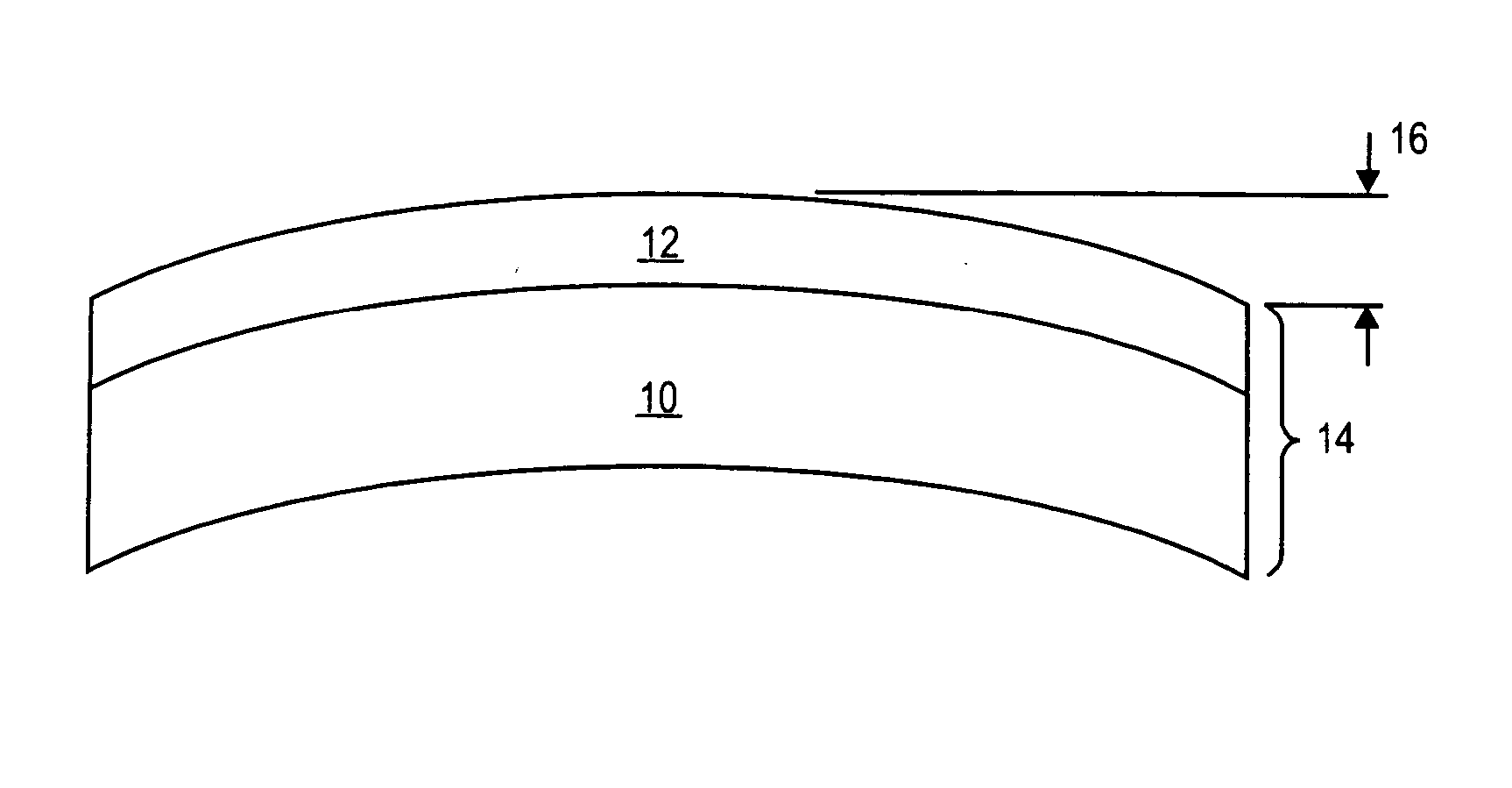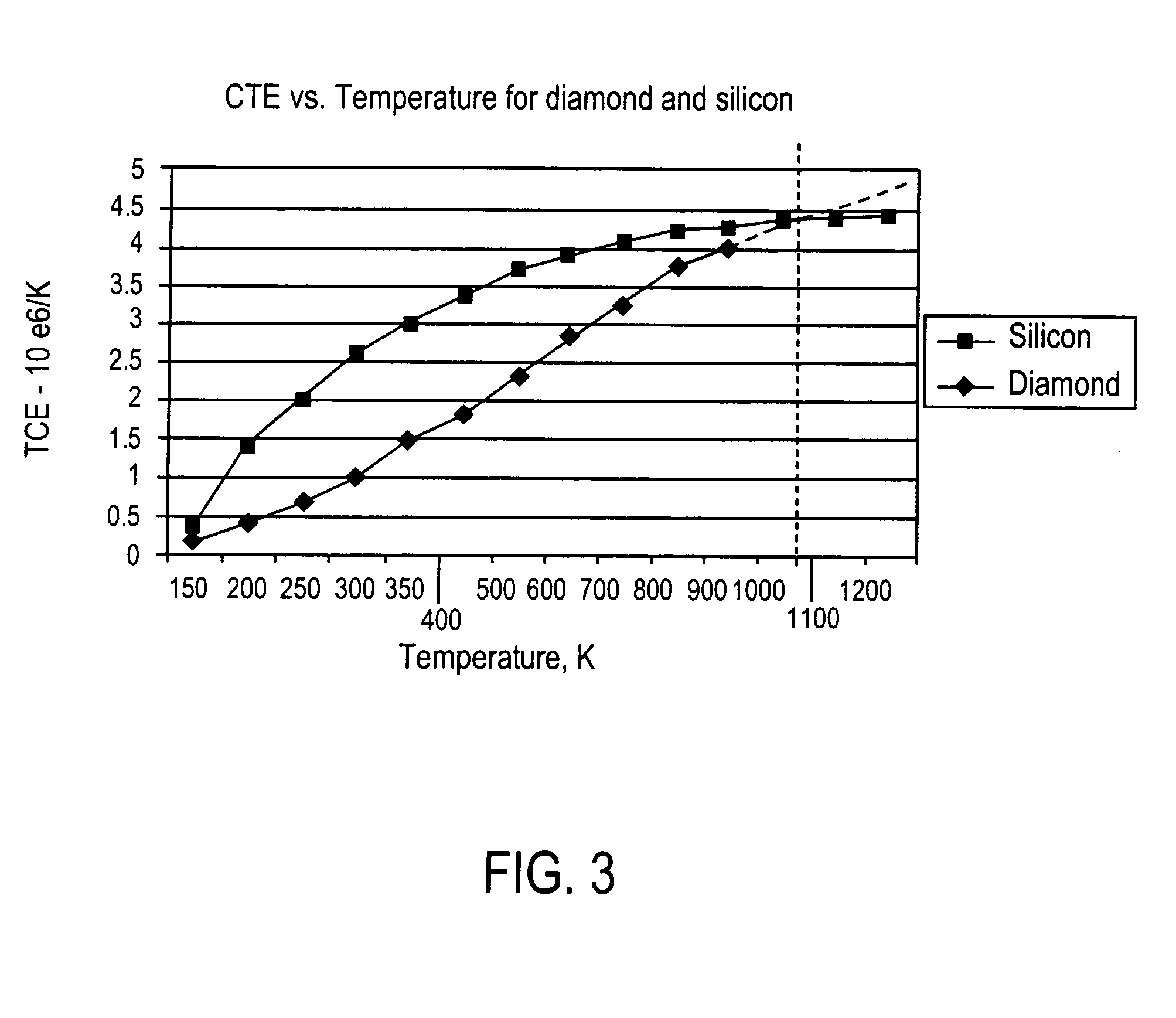Method of fabricating a microelectronic die
a technology of microelectronic dies and dies, applied in the direction of basic electric elements, electrical equipment, semiconductor devices, etc., can solve the problem of relatively limited stress that can be provided by these processes
- Summary
- Abstract
- Description
- Claims
- Application Information
AI Technical Summary
Problems solved by technology
Method used
Image
Examples
Embodiment Construction
[0017] A method of fabricating a microelectronic die is provided. Transistors are formed in and on a semiconductor layer. A channel of each transistor is stressed after the transistors are manufactured by first forming a diamond intermediate substrate at an elevated temperature on a handle substrate, allowing the intermediate substrate and the handle substrate to cool, attaching the semiconductor layer, and then removing the handle substrate. The intermediate substrate has a lower CTE than the handle substrate, so that the intermediate substrate tends to bow when the handle substrate is removed. Such bowing creates a tensile stress, which translates into a biaxial strain in channel regions of the transistors. Excessive bowing is counteracted with a compensating polysilicon layer formed at an elevated temperature and having a higher CTE on a side of the diamond intermediate substrate.
[0018] As illustrated in FIG. 1, the method of fabricating a microelectronic die, according to an em...
PUM
 Login to View More
Login to View More Abstract
Description
Claims
Application Information
 Login to View More
Login to View More - R&D
- Intellectual Property
- Life Sciences
- Materials
- Tech Scout
- Unparalleled Data Quality
- Higher Quality Content
- 60% Fewer Hallucinations
Browse by: Latest US Patents, China's latest patents, Technical Efficacy Thesaurus, Application Domain, Technology Topic, Popular Technical Reports.
© 2025 PatSnap. All rights reserved.Legal|Privacy policy|Modern Slavery Act Transparency Statement|Sitemap|About US| Contact US: help@patsnap.com



